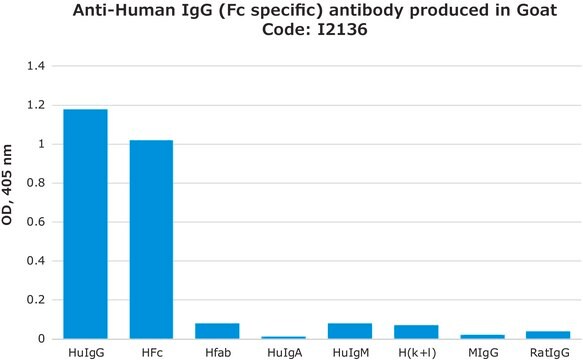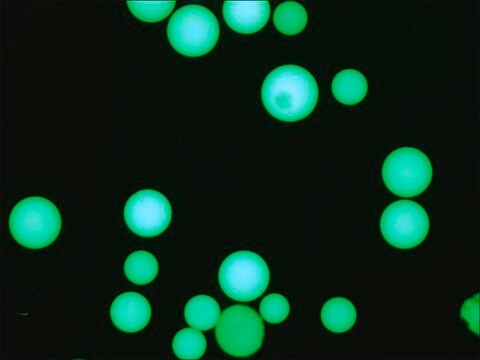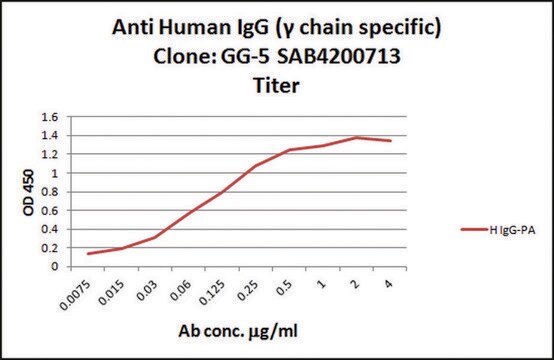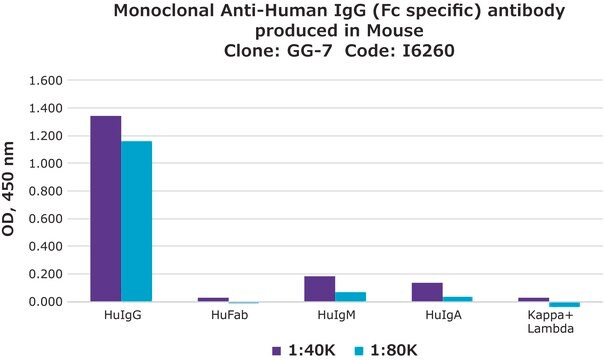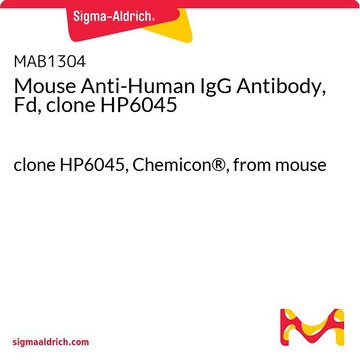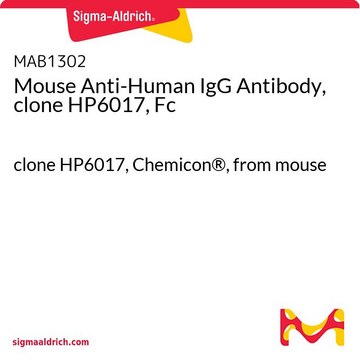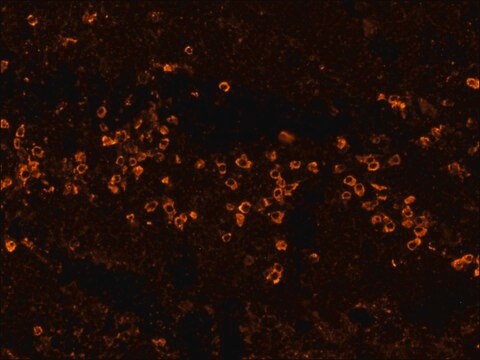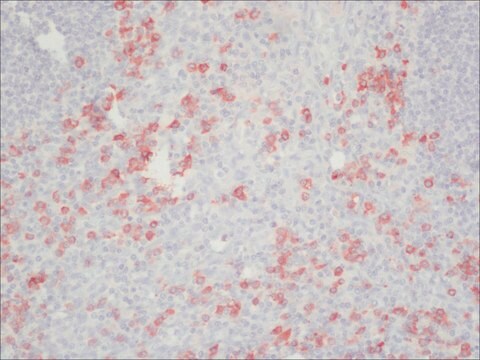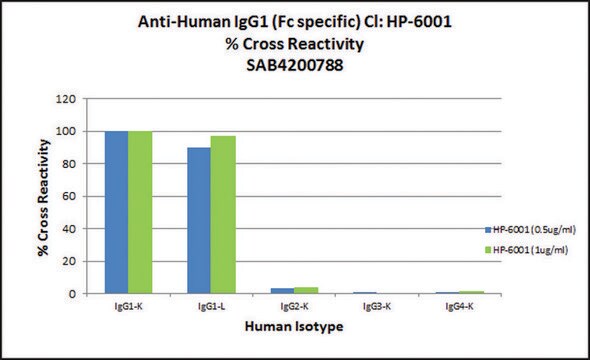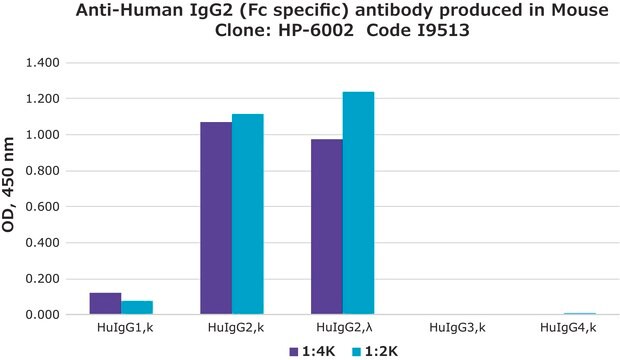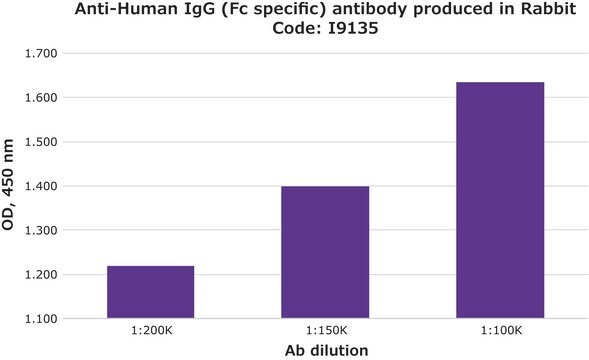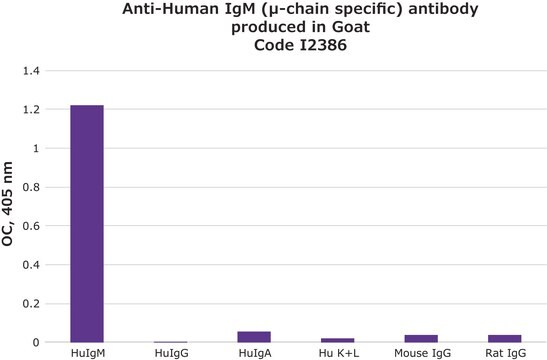Kluczowe dokumenty
SAB4200682
Anti-Human IgG (Fc specific) antibody, Mouse monoclonal
clone GG-7, purified from hybridoma cell culture
Synonim(y):
Monoclonal Anti-Human IgG (Fc specific) antibody produced in mouse
About This Item
Polecane produkty
pochodzenie biologiczne
mouse
Poziom jakości
forma przeciwciała
purified immunoglobulin
rodzaj przeciwciała
primary antibodies
klon
GG-7, monoclonal
Formularz
buffered aqueous solution
reaktywność gatunkowa
human
stężenie
~1 mg/mL
metody
ELISA: suitable
immunofluorescence: suitable
indirect ELISA: 0.25-0.5 μg/mL using 5μg/mL human IgG for coating.
izotyp
IgG1
Warunki transportu
dry ice
temp. przechowywania
−20°C
docelowa modyfikacja potranslacyjna
unmodified
Opis ogólny
Immunogen
Zastosowanie
- ELISA
- Imprint Immunofixation (IIF)
- Immunofluorometric Assay (IFMA)
- Hemagglutination (HA)
- Hemagglutination Inhibition (HAI)
- Particle Counting Immunoassay (PACIA)
- detection of cytoplasmic IgG
Działania biochem./fizjol.
Postać fizyczna
Oświadczenie o zrzeczeniu się odpowiedzialności
Nie możesz znaleźć właściwego produktu?
Wypróbuj nasz Narzędzie selektora produktów.
Kod klasy składowania
10 - Combustible liquids
Temperatura zapłonu (°F)
Not applicable
Temperatura zapłonu (°C)
Not applicable
Wybierz jedną z najnowszych wersji:
Certyfikaty analizy (CoA)
Nie widzisz odpowiedniej wersji?
Jeśli potrzebujesz konkretnej wersji, możesz wyszukać konkretny certyfikat według numeru partii lub serii.
Masz już ten produkt?
Dokumenty związane z niedawno zakupionymi produktami zostały zamieszczone w Bibliotece dokumentów.
Klienci oglądali również te produkty
Nasz zespół naukowców ma doświadczenie we wszystkich obszarach badań, w tym w naukach przyrodniczych, materiałoznawstwie, syntezie chemicznej, chromatografii, analityce i wielu innych dziedzinach.
Skontaktuj się z zespołem ds. pomocy technicznej